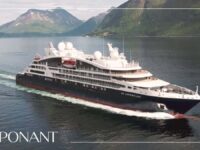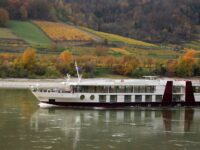Take a tour through some of the most famous pirate hideouts of history, and meet the marauders who helped build them.
1. port royal
During thegolden age of piracy".at the end of the 17th and beginning of the 18th century, Port RoyalJamaica, was one of the most popular ports of call for thieves, prostitutes and pirates of all kinds. The small port's association with marauding began in the mid-1600s, when Jamaican governors offered it as a haven for pirates in exchange for protection from the Spanish. Buccaneers accepted the deal, and the city soon became an important stop for British and French privateer captains charged by the Crown with disrupting Spanish shipping in the Caribbean and Atlantic. One of the most famous of these state-sanctioned pirates was Sir Henry Morgan, a Welsh captain who used Port Royal as a base of operations for raids on the Spanish strongholds of Portobello, Cartagena and Panama City.
Port Royal thrived on its pirate economy, and in the 1660s its streets were lined with taverns and brothels eager to satisfy the whims of young buccaneers who fed on Spanish booty. Contemporary accounts describe a squalid port overrun by gambling, prostitution and drinking, where hard-living sailors often squandered thousands of Spanish reals in a single night. Even after the end of the privateersthe so-called "wickedest city in the world" continued to serve as a haven for a new breed of independent, lawless pirates. But when these raiders began to indiscriminately plunder shipping traffic in the Caribbean, the colonial authorities in Port Royal were finally put to work. By 1720, the city had begun to clean up its act and its "Gallows Point" became a notorious site for pirate hangings. Among countless others, freebooters like the ruthless Charles Vane and the flamboyant "Calico" Jack Rackham (the famous pirate who adopts the pirate flag ) will eventually come to an end in Port Royal.
2. The island of Sainte-Marie
Pirates with wooden legs and sea captains with swords are generally associated with CaribbeanAlthough they were the most successful buccaneers, many of them plied their trade in the Indian Ocean. From the end of the 17th century, bands of buccaneers well-armed pirates used the African island of Madagascar as a base of operations for raids on European and Asian ships. According to pirate legend, some of these pioneer raiders even established a utopian colony called Libertalia, where they mingled with native women and organized a democratic government. Libertalia is most likely a maritime myth, but Madagascar was home to several other pirate strongholds, the most famous of which is Sainte-Marie Island on the northeast coast.
In the 1690s, St. Mary's had a population of about 1,500 and served as a supply base for pirates like theapitaine Kidd, Thomas Tew and Henry Every. St. Mary's attacked ships carrying exotic goods from India, and local merchants would then sell the loot to crooked merchants in cities like New York and Boston. Some of these raids were among the most lucrative crimes in history. For example, in 1695, Henry Every used a fleet of six ships to attack a treasure ship belonging to the Great Mogul of India. After a bloody battle, he escaped with the equivalent of some $200 million in loot.
3. Tortuga
In the early 1600s, the rocky island of Tortuga was the main stronghold of a motley group of adventurers, thieves and runaway slaves who preyed on the treasures of Spanish ships in the Caribbean. These raiders began as a group of French hunters on the nearby island of Hispaniola (now Haiti), and it was the French word for their method of curing meat, "boucaner," that inspired their feared nickname: the buccaneers. The buccaneers fled Hispaniola to Tortuga around 1630 after the arrival of the Spanish settlers, and they soon turned to the lucrative piracy trade. To support their operations, they made Tortuga a fortified stronghold. Jean le Vasseur, a buccaneer chief who had worked as a military engineer, even built a 24-gun castle called Fort de Rocher to help guard the island's harbor.
Tortuga became a prime destination for pirates, attracting men of character as far away as England, Holland and Portugal. As would-be marauders arrived on the island, they organized themselves into a brotherhood of thieves called the "Brothers of the Coast" and developed their own code of conduct. Many of these brothers received privateering commissions from England and France, and they proved to be a thorn in the side of the Spanish, who responded with repeated attacks on Tortuga. The buccaneers later served under Sir Henry Morgan in his famous raids on the Spanish Main, but their influence waned with the end of the privateering. While a few continued to prowl the Caribbean for several decades, Tortuga's buccaneers had all but disappeared by the early 18th century.



